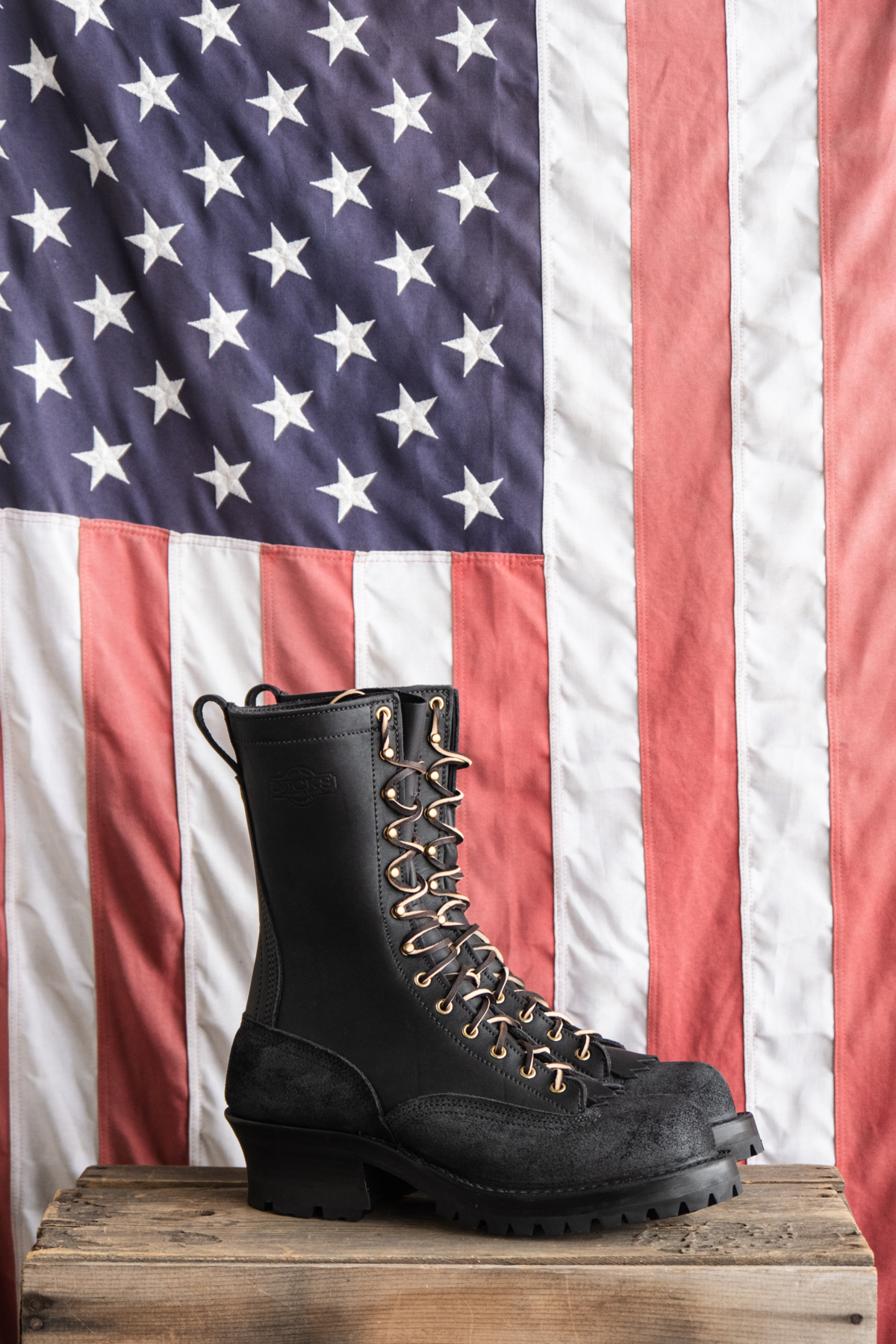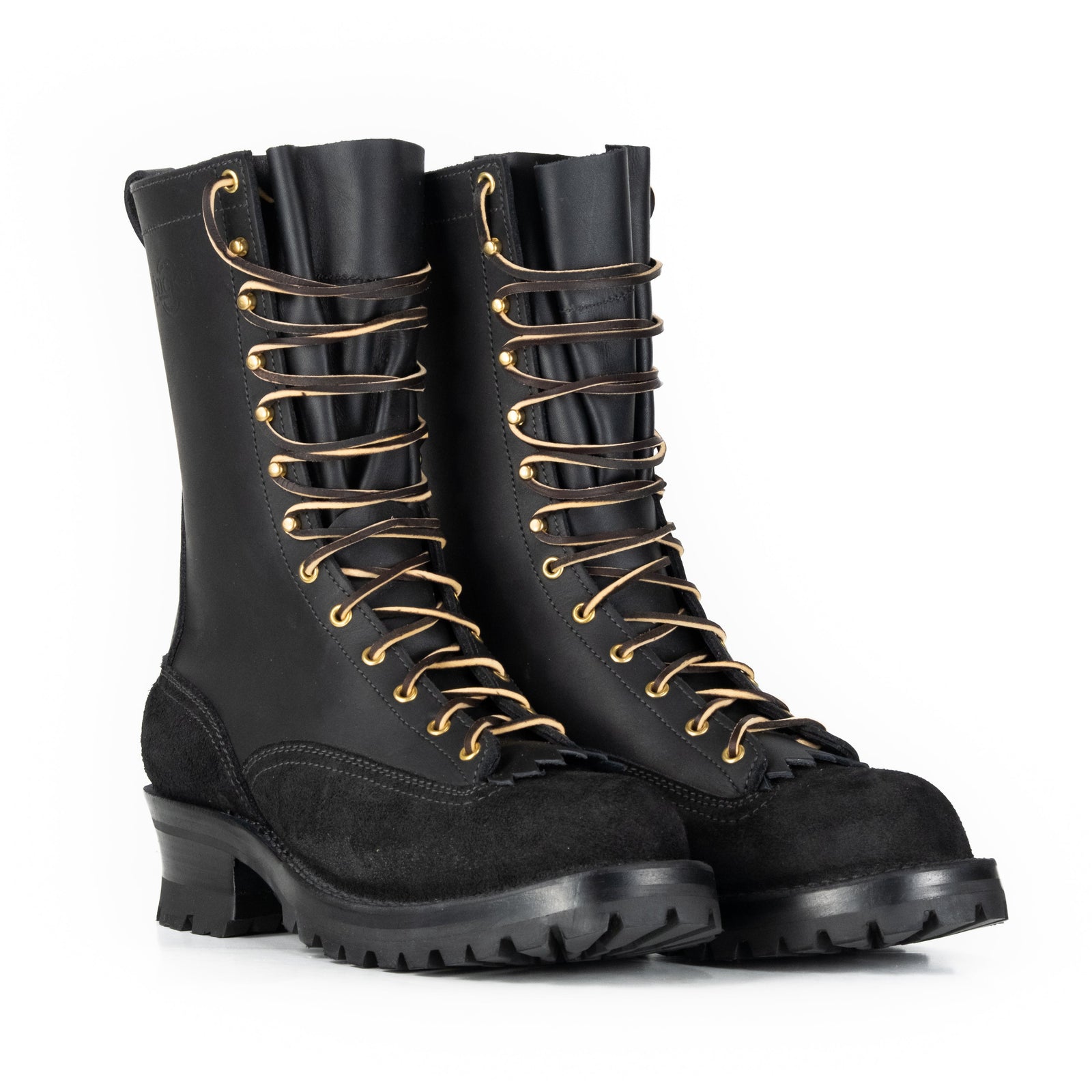The purpose of lace-to-toe boots is to add a little more rigidity to the toe box. It keeps the toes from flexing further than they should, but also spreads lace tension over a larger area. That lets you lace your boots to support your feet, but without having to make the ankle or other parts of the boot too tight.
Lace to toe boot are a classic work boot (and heritage boot) style that has been around for a long time, which is why a lot of boot brands offer lace-to-toe as an option or make certain boots with that lacing pattern as a matter of course.
Should you get lace to toe boots?
Lace-To-Toe Boots Are Classic Work Wear
Lace-to-toe boots have been around for quite some time, both as <a href="https://nicksboots.com/shop/work-boots/">worka> and also as casual wear. While plenty of work boots and work shoes had an eyelet layout almost the same as today (the eyelets end before the toes begin) it was common for working footwear to have a lace-to-toe design.
The reason was to give the boot a little more structure, setting the ball of the foot but also spreading tension from the laces across a larger surface area. That way, you can still lace the boot - or shoes - to set the heel into the heel cup, but without having to make the boot too tight in the ankle or at the end of the laces near the toes.
Basically, you don't have to make your laces as tight to get the support you need. Some people find they have to lace the ankle almost too tight for comfort to stiffen the boot and get the structure they need; the lace-to-toe design is supposed to help keep you from having to do that.
While the modern fashion has been for the more traditional lacing design with the vamp ending well before the ball of the foot, plenty of work boot makers have kept part or some of their lineup available with a lace-to-toe option.
It was also very common in classic hiking boots. Look at the vintage or original design of leather hiking boots from Danner, Merrell and others and they are either lace-to-toe or very close to it.

Monkey Boots Made Lace-To-Toe Fashionable
Fashion and pop culture influences boot and shoe design, of course, and the lace-to-toe boot style gained a certain notoriety thanks to what are called "monkey boots."
In the late 60s and early 70s, it became fashionable to wear military boots for whatever reason. Granted, there's some sense in it; military boots are usually very practical and some are very stylish. A classic Officer boot is a darn fine choice of great footwear.
Usually, though…people wore them because surplus boots were cheap and it was rebellious.
Monkey boots were military surplus boots from (then) Czechoslovakia. The monkey boot is not far removed from classic hiking boots; there's little difference between them and vintage Danner hikers besides a few materials and the stitching.
The monkey boot caught on with English "mod" culture, especially surplus imports through the Grafters brand.
While they didn't catch on to the same degree elsewhere, the monkey boot - like other military-style boots that became fashionable - kept the lace-to-toe design in pop culture, and that has something to do with why a number of more fashion-oriented boot and shoe brands have at least one (or a few) lace-to-toe shoes or ankle boots in their catalog.

Lace-To-Toe Boots Are Great As Work Boots Or Heritage Boots
The lace-to-toe style is a classic, time-tested boot design that's incredibly practical, so it's definitely a good fit for a pair of quality work boots. The lace design is also a perfect fit for heritage boots, because it is definitely a feature of classic leather shoe and boot design.
Make sure you try on a pair before ordering, however. Some people find the extra lacing can take a little bit out of the toe box, so you'll want to make sure that you have all the room you need for your toes to move.
With that said, lacing to the toes is a great look and functional at the same time. It's hard to ask for more than that.





































